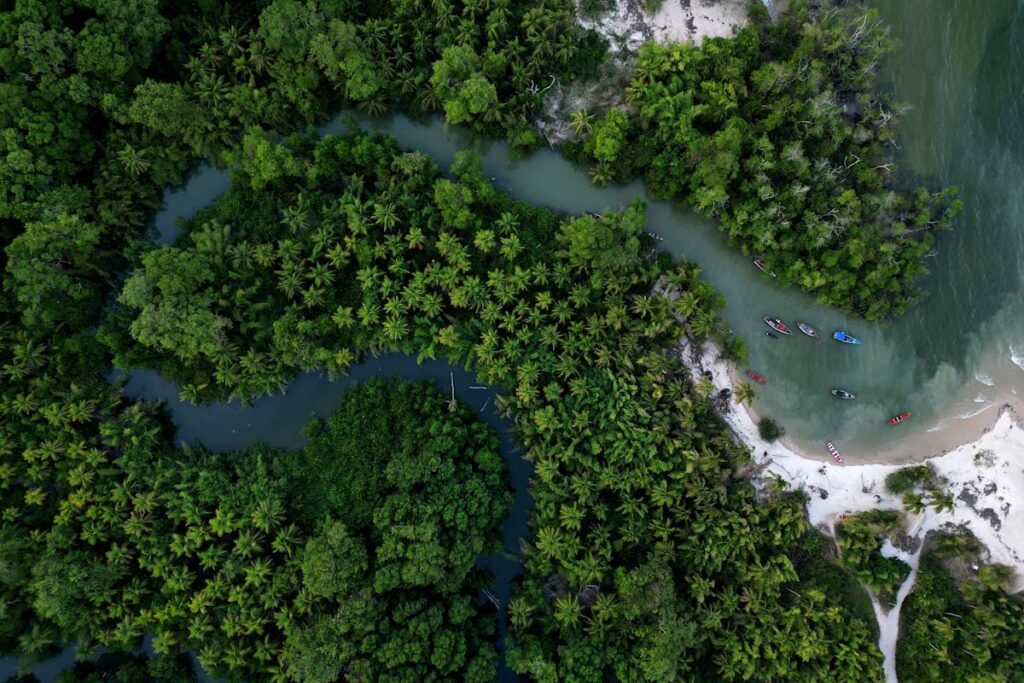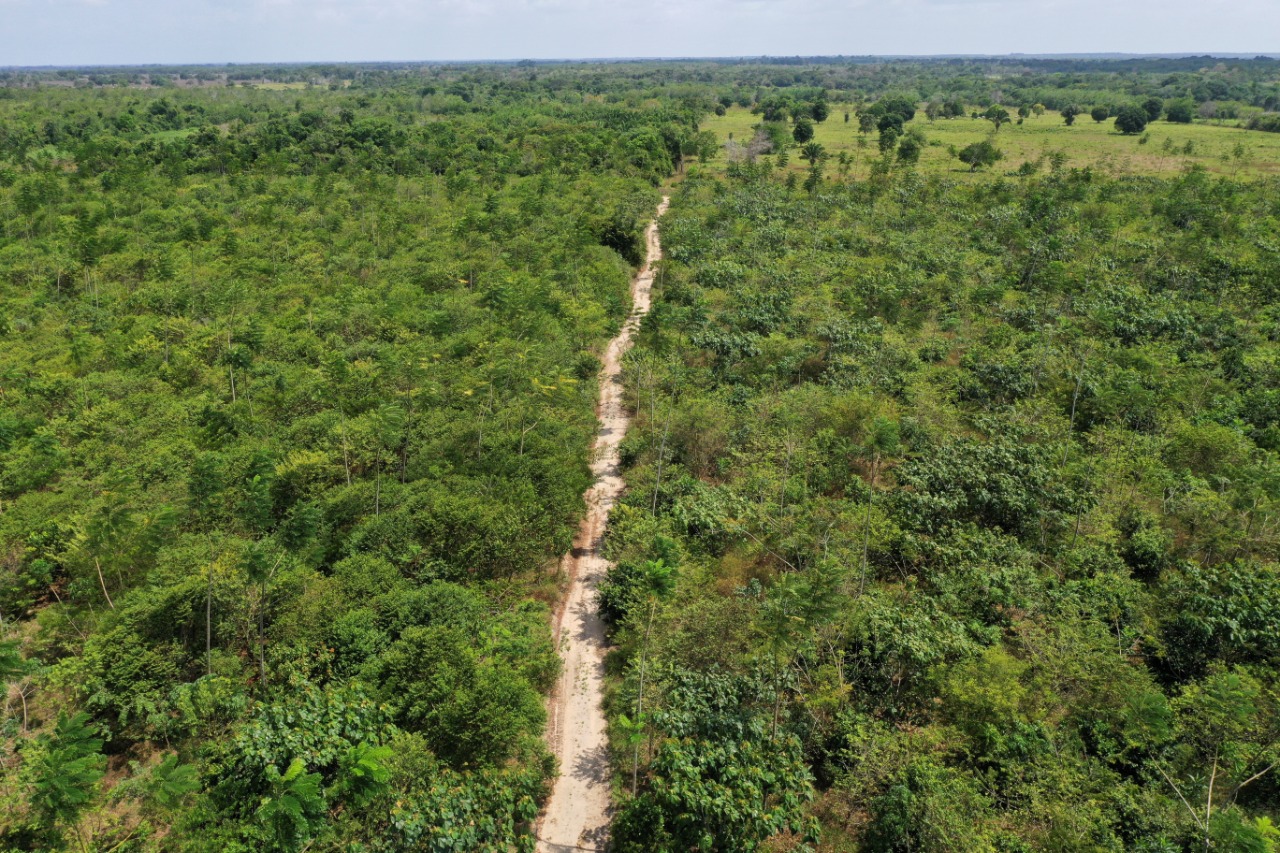Amazon reforestation Google's latest step in its global ambition to reduce carbon emissions and reach the net-zero target. In a major deal with the Brazil-based startup Mombak, this tech giant will buy as many nature-based carbon removal credits. 200,000 metric tons, making it Google's largest reforestation project to date.
This move signals a new direction for Google in its global decarbonization strategy, where investments in nature-based projects serve as a complement to high-tech approaches such as direct air capture.
Google's Big Commitment to Amazon Reforestation
The agreement with Mombak shows Google's seriousness in making Amazon reforestation as its main source of carbon removal credits.
Startup Mombak was chosen because it meets the strict standards set by Symbiosis Coalition, global alliance supported by Google, Meta, Microsoft, and Salesforce. The Mombak approach is considered credible, mainly because they transform grasslands and degraded areas in the Amazon into forests again, with measurable and transparent ecological impacts.
Four times larger in scale than the previous project.
This new agreement is four times larger than the pilot project launched by Google and Mombak in September 2024. The carbon offset volume produced this time reaches 200,000 metric tons, marking the escalation of Google's commitment to nature-based solutions.
In addition, this project is regarded as one of the most important forms of international cooperation ahead of COP30 Climate Conference in Belém, Brazil, nicknamed 'Forest COP' because of its focus on tropical forest conservation.
Shift in Focus from REDD to Measured Reforestation
Google openly states that it distances itself from the REDD mechanism (Reducing Emissions from Deforestation and Forest Degradation) because that market has at times been plagued by allegations of fraud and a lack of transparency. Conversely, the Mombak project offers a robust verification system, with satellite-data-based carbon measurements and independent audits.
In doing so, this step shows that Google not only wants offset emissions, but also ensure the quality, integrity, and ecological impact of every ton of carbon removed.
Why Google Chooses a Natural Approach
Google has long invested in carbon removal technologies, ranging from mineralized rocks, biochar, to direct air captureHowever, this time the company considers reforestation as the least risky technology because it works through the natural mechanism of photosynthesis.
Reforestation not only stores carbon, but also restores ecosystems and increases biodiversity in the Amazon region that has long been threatened by massive deforestation.
Environmental and Social Benefits of Amazon Reforestation
In addition to the carbon benefits, this project opens up new economic opportunities for local communities in Brazil. Farmers and indigenous communities are involved in land restoration activities, tree maintenance, and sustainability monitoring.
This approach creates a synergy between environmental interests and social welfare, strengthening the growing green economy ecosystem in South America.
High Price, High Quality
Nature-based carbon market often faces quality challenges. However, projects like Mombak point to a new direction: high prices reflect high quality.
The carbon credits from this project reach US$ 50–100 per ton, far above the price of REDD credits which are often below US$10 per ton.
This rise signals a market paradigm shift from merely cheap offsets to credible and sustainable climate investments.
Global Impact and Relevance for the Carbon Market

Google's move carries a strong message to the international carbon market. Demand for truly high-quality carbon credits is now rising sharply, while supply remains limited.
According to market analysts, this deal is a positive signal for environmental startups that focus on nature-based solutions. When giant companies such as Google, Microsoft, and Salesforce unite to push high standards, similar projects have the potential to grow rapidly in various parts of the world.
Contribution to Google's net-zero target
As a company with data centers and electricity-intensive digital infrastructure, indirect emissions (scope 2) has become a major challenge for Google. By securing credible carbon credits, Google is reducing part of the climate impact of its global energy consumption.
The company also emphasized that purchasing carbon credits is not a substitute for direct emission reductions, but rather a complement in a comprehensive energy transition strategy.
Momentum Ahead of COP30 Brazil
This agreement comes at a strategic time. Brazil will be the host. COP30, and projects like Mombak become a symbol of the revival of Amazon's role in global climate diplomacy.
The Brazilian government called the conference "Forest COP" — a momentum to show that tropical forests are not only a national asset, but the lungs of the world that must be protected together.
The Challenge of Reforestation and a Nature-Based Carbon Future
Although reforestation is considered low risk, challenges still exist. Forest fires, extreme climate change, or failure of tree growth can reduce the effectiveness of the project.
In addition, long-term success depends on post-planting care, satellite monitoring, and economic incentives for the surrounding community to maintain the sustainability of the forest that has already been restored.
A market that grows faster than its supply.
Currently, demand for high-quality carbon credits far exceeds supply. Many global companies have started looking for projects that meet integrity and sustainability standards.
This is an opportunity for startups like Mombak to expand their operations and attract new investment. Google itself refers to this project as part of Global strategy for trust-based carbon procurement.
Criticism and Cautionary Notes
Some parties still view carbon offsets as a 'shortcut' that risks delaying the transition to clean energy. However, Google emphasizes that initiatives like this do not replace efforts to reduce emissions at the source, but rather accelerate the restoration of damaged global ecosystems.
Thus, reforestation projects remain an important element in a comprehensive corporate climate strategy.
Google and Mombak Change the Direction of the Carbon Market
Google's steps through the project Amazon reforestation Together with Mombak, we mark a new era in nature-based climate investments. With a carbon offset volume of 200,000 tons and a transparent approach, this project serves as a concrete example of how technological innovation and ecological solutions can go hand in hand.
This initiative not only benefits Google's reputation, but also paves the way for the transformation of the global carbon market toward higher standards of integrity.
Amazon restoration has now become a symbol that concrete actions by the private sector can help restore this planet one hectare at a time.















